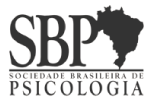Exercise frequency and levels of anxiety and stress during the COVID-19 pandemic are mediated by craves to move and to rest
Keywords:
motivation, anxiety, stress, exercise, COVID-19Abstract
The concept of craves to move and to rest is a psychological construct that has recently been proposed as a key predictor for exercise adherence and a more active lifestyle in the field of motivation research. During the COVID-19 pandemic lockdown, we observed that individuals who engaged in regular exercise reported better levels of psychological health and wellbeing. Based on this observation, our hypothesis was that craves to move and to rest could also mediate the relationship between the frequency of physical exercise and anxiety and perceived stress. To test our hypothesis, we recruited 574 volunteers who completed four online questionnaires assessing state anxiety, perceived stress, craves to move and to rest, and sociodemographic information (including weekly frequency of exercise) during the COVID-19 lockdown. We used a structural equation model, specifically a mediation analysis, which revealed a significant mediating effect of craves to move and to rest between the frequency of physical exercise and anxiety and perceived stress levels. In other words, the weekly frequency of exercise was not directly associated with state anxiety, but rather through its effect on craves to move and to rest. Our results suggest that understanding the role of craves to move and to rest is crucial in comprehending the relationship between physical exercise and anxiety.





